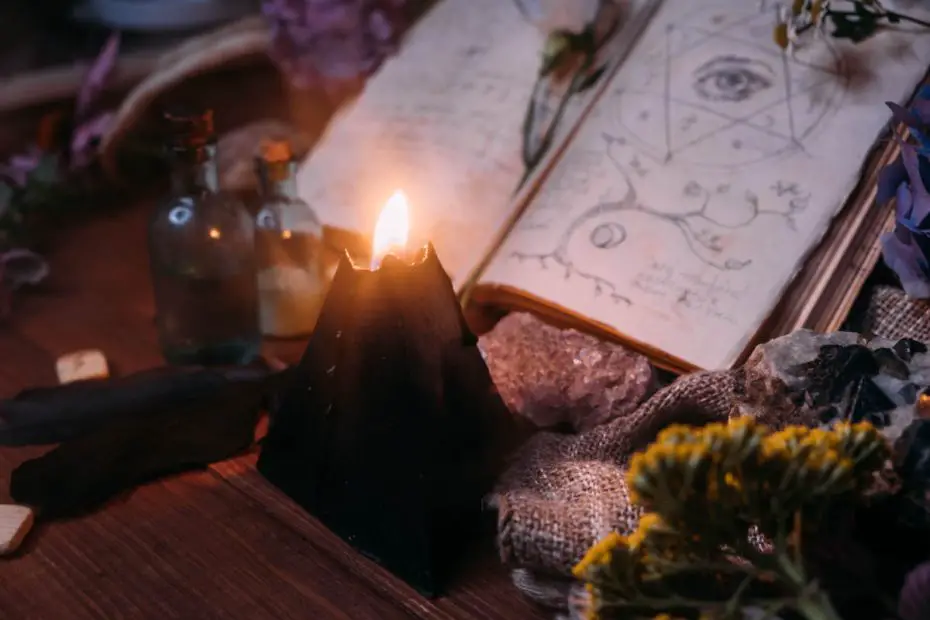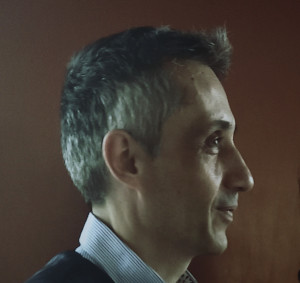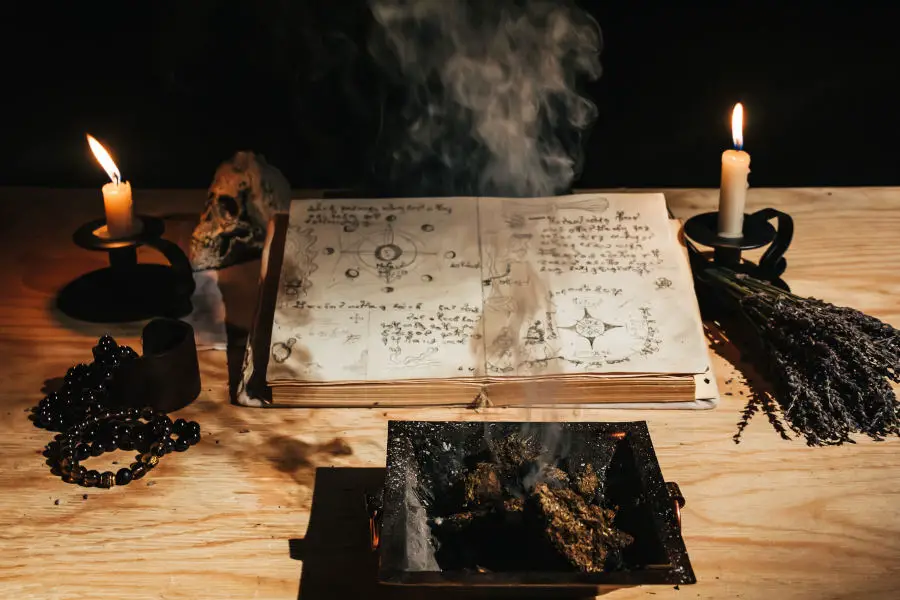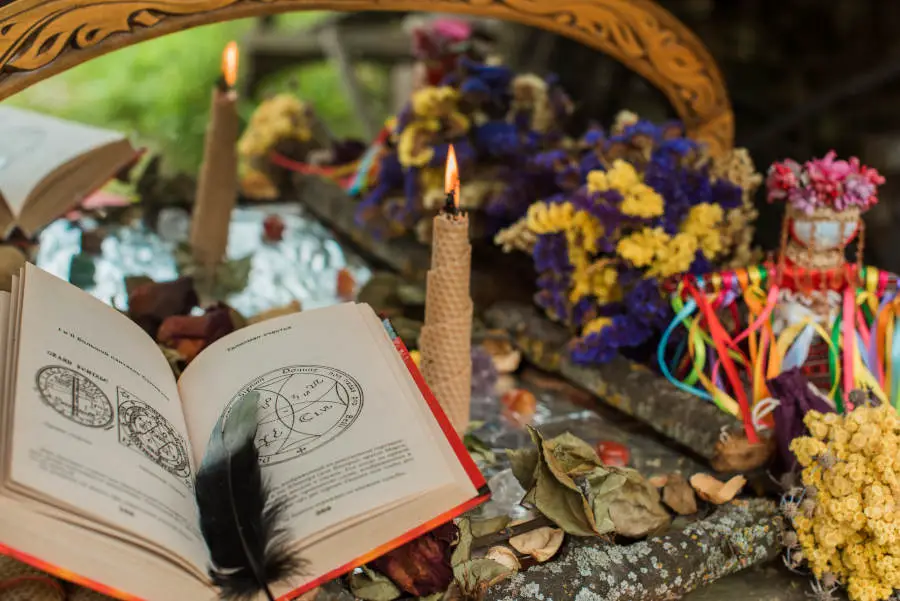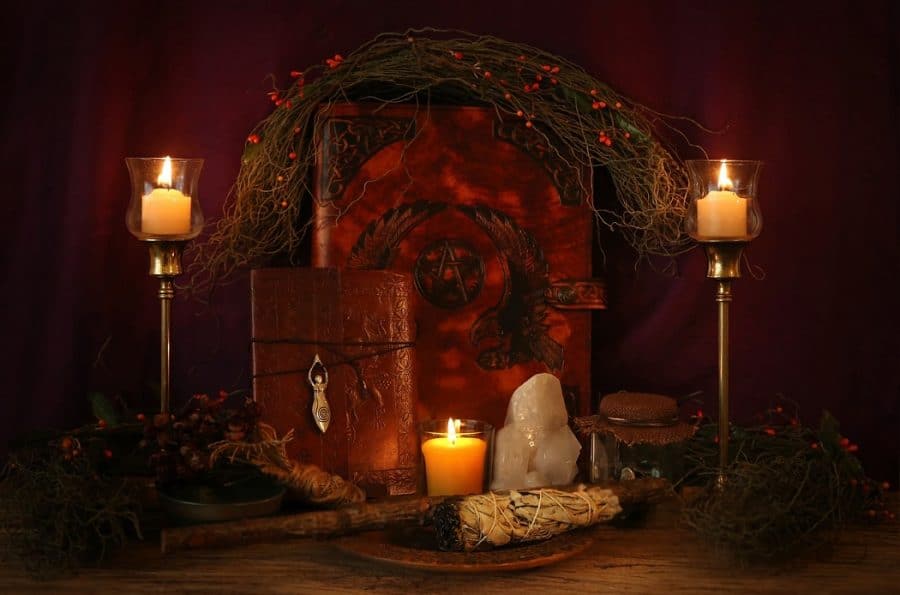Magic in the seventeenth century was more than just a collection of spells and superstitions; it was a vital part of everyday life, deeply intertwined with the era’s philosophy, science, and culture.
As Europe transitioned from the Renaissance into the Age of Enlightenment, the role of magic underwent a profound transformation. This article explores the journey of magic during this pivotal century, examining its influence on society, its eventual decline, and the enduring legacy it left behind.
Through this exploration, we gain a deeper understanding of how magic shaped, and was shaped by, the evolving intellectual landscape of early modern Europe.
The Evolution of Magic: From Divination to Intervention
Magic, in its earliest forms, was deeply intertwined with the fabric of human civilization. Ancient societies across the globe viewed magic as a means to interpret and influence the unknown. It was a powerful tool, a way to communicate with the divine, to predict the future, and to bring about desired outcomes.
The origins of magic are rooted in divination—practices aimed at uncovering hidden knowledge or foreseeing future events. Whether through the casting of lots, reading of stars, or interpretation of dreams, magic was seen as a bridge between the human and the supernatural. This early magic was less about wielding power over nature and more about understanding and communicating with it.
Magic’s Transformation During the Renaissance
The Renaissance was a period of significant transformation for magic. The shift from divination to the active manipulation of nature was a gradual but profound change in the practice of magic. In the past, magicians primarily focused on interpreting signs and omens, but during the Renaissance, the emphasis began to move towards using knowledge to produce tangible results.
This transition was fueled by a growing belief in the interconnectedness of all things—a belief that the same principles governing the stars also governed earthly affairs. Additionally, this era saw the emergence of natural magic—a system that sought to uncover the hidden properties of natural objects and use them to achieve specific effects.
So, magicians of this period sought to discover and harness the “occult qualities” within nature. These were hidden forces or powers believed to be inherent in natural objects, which, if properly understood, could be used to influence the world.
The manipulation of these occult qualities marked a significant departure from earlier forms of magic, positioning it as a precursor to the scientific experimentation that would later dominate the intellectual landscape.

The Clash Between Magic and Religion: From Acceptance to Rejection
In the early days of Christianity, the Church’s stance on magic was not entirely hostile. Some forms of magic, particularly those involving healing and divination, were seen as part of the natural world, not inherently evil.
However, as Christianity spread and the Church’s influence grew, its view on magic began to change. By the medieval period, the Church had become increasingly suspicious of magic, associating it with paganism and heresy. Magic was seen as a rival to the divine power of God, something that could lead people away from the true faith.
The Church’s rejection of magic culminated in the widespread persecution of those accused of practicing it, often labeling them as witches or sorcerers. This shift from acceptance to rejection marked a significant turning point in the history of magic, as it became increasingly marginalized and associated with the demonic.
The Rise of Natural Magic and Its Religious Implications
Despite the Church’s growing opposition to magic, the Renaissance period saw the rise of natural magic, a form that sought to work within the boundaries of natural law rather than against it. Natural magic was based on the belief that God had imbued the natural world with hidden forces and qualities that could be discovered and used for the benefit of mankind.
Practitioners of natural magic, such as philosophers and alchemists, argued that their work was not in opposition to the Church but rather a way of uncovering God’s divine plan. However, this form of magic still had significant religious implications.
While some in the Church saw it as a legitimate pursuit of knowledge, others were wary, fearing that it blurred the line between divine will and human ambition. The tension between these perspectives highlighted the complex relationship between religion and magic during this period.
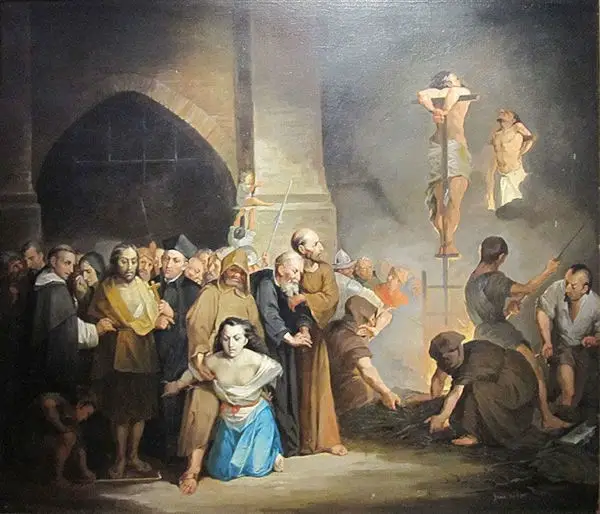
Demonic vs. Natural Magic: Drawing the Line
As the practice of magic evolved, it became increasingly important to distinguish between what was considered acceptable (natural magic) and what was condemned (demonic magic).
Natural magic, which operated within the confines of natural law, was often seen as a pursuit of knowledge that could bring humanity closer to understanding God’s creation. In contrast, demonic magic was viewed as inherently evil, involving the invocation of spirits and the manipulation of supernatural forces for personal gain.
The Church was particularly concerned with the latter, seeing it as a direct challenge to the divine order. This distinction was crucial in the Church’s efforts to control and suppress magical practices.
By drawing a clear line between natural and demonic magic, the Church aimed to protect its authority while allowing some room for the pursuit of natural philosophy, provided it did not cross into the realm of the forbidden.
Related Reading: “Church Versus Magic in The Early Middle Ages“ – Opens in new tab
The Role of Magic in Early Modern Science: How Magic Influenced the Birth of Experimental Science
Magic played a surprisingly significant role in the development of early modern science. During the Renaissance, the boundaries between magic and science were not as clearly defined as they are today.
Many early scientists, or natural philosophers as they were called, were deeply influenced by magical traditions. They believed that the natural world was filled with hidden forces and powers that could be uncovered through careful study and experimentation.
This belief laid the groundwork for the scientific method, as early practitioners sought to understand and control these forces through observation, experimentation, and documentation. The idea that nature held secrets waiting to be revealed was a core tenet of both magic and the emerging scientific practices, helping to shape the birth of experimental science.
Key Figures Who Bridged Magic and Science
Several key figures in history successfully bridged the gap between magic and science, blending mystical beliefs with systematic investigation.
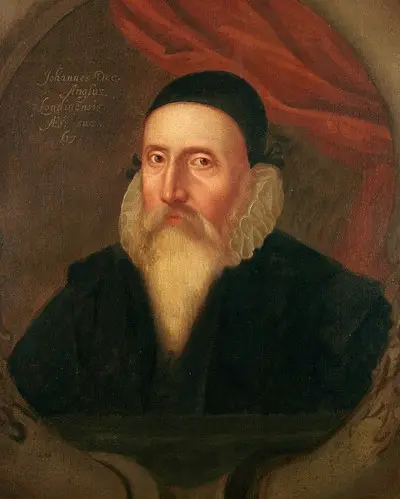

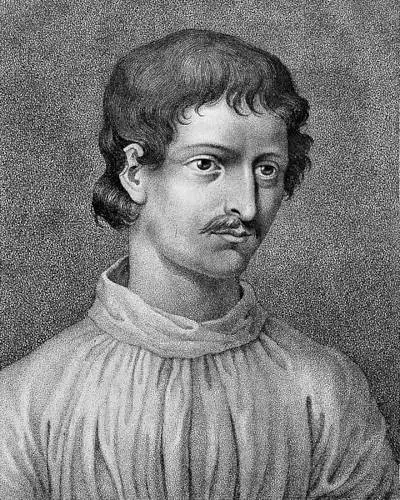
One of the most notable was John Dee, an English mathematician, astrologer, and alchemist. Dee’s work was deeply rooted in both magical and scientific traditions, and he played a significant role in advancing the study of optics, navigation, and mathematics.
Another important figure was Paracelsus, a Swiss physician and alchemist, who revolutionized medicine by introducing chemical remedies and emphasizing the importance of direct observation and experience over traditional theories.
Giordano Bruno, an Italian philosopher and occultist, also made significant contributions, particularly in the realm of cosmology, by proposing ideas that challenged the established scientific views of his time.
These individuals and others like them exemplified how the pursuit of knowledge during this period often blurred the lines between magic and science, with each discipline influencing and informing the other.
Experimentation and Hidden Qualities: The Magic-Science Nexus
The nexus between magic and science in the early modern period was heavily centered around the concept of hidden qualities or occult properties. These were the unseen forces within nature that both magicians and scientists sought to understand and manipulate.
Early experimental scientists, inspired by magical practices, believed that by experimenting with these hidden qualities, they could unlock the secrets of the natural world. This approach led to significant advancements in fields such as chemistry, physics, and medicine.
The process of experimentation itself—carefully testing, observing, and recording results—was influenced by the methodical practices of magicians who had long engaged in similar techniques to achieve desired outcomes.
This blending of magic and empirical investigation was crucial in moving from mystical explanations of the world to more systematic and testable scientific theories.
Related Reading: The Witch Stereotype and the Crime of Witchcraft – Opens in new tab
Magical Theories That Shaped the Seventeenth Century
In the seventeenth century, magical thought was deeply rooted in the belief that the natural world was imbued with occult qualities and active powers. These were hidden forces, not readily apparent to the senses, but believed to influence the behavior of physical objects and living beings.
Thinkers of the time postulated that everything in nature, from plants to minerals, possessed inherent qualities that could be activated and harnessed through specific rituals, symbols, or substances.
These occult qualities were seen as the underlying principles that governed the interactions within the natural world, forming the bedrock of magical theories. This concept of a universe filled with unseen, active powers provided a framework for understanding phenomena that could not yet be explained by science, giving rise to a rich tradition of magical practices aimed at discovering and utilizing these hidden forces.
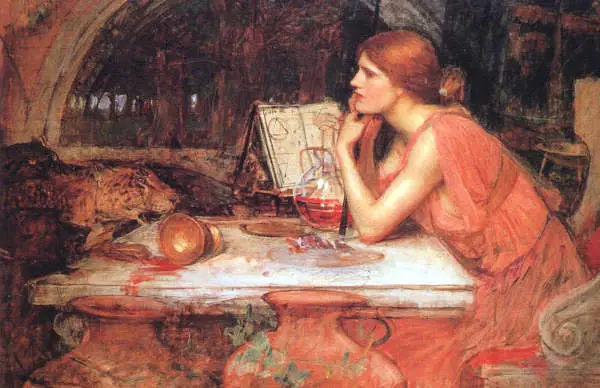
Natural Magic Explained: Manipulating Nature with Hidden Forces
Natural magic was one of the most influential branches of magical theory in the seventeenth century, focusing on the manipulation of the natural world through the understanding of its hidden forces.
Practitioners of natural magic believed that by uncovering and harnessing these occult qualities, they could produce real, tangible effects—whether it was healing the sick, influencing the weather, or transmuting metals.
Unlike demonic magic, which involved invoking supernatural beings, natural magic operated within the boundaries of what was considered natural law. It was seen as an extension of the natural sciences, with magicians acting as early experimenters who tested the properties and interactions of natural substances.
By employing various tools and rituals, they sought to influence the material world in a way that aligned with their understanding of its hidden properties, thus laying the groundwork for later scientific experimentation.
Demonic Magic: The Darker Side of Magical Practices
Demonic magic represented the darker, more feared side of magical practices in the seventeenth century. Unlike natural magic, which was seen as a legitimate, albeit mysterious, manipulation of natural forces, demonic magic was associated with the invocation of malevolent spirits and the breaking of natural and divine laws.
It was believed that practitioners of demonic magic, often labeled as witches or sorcerers, made pacts with demons or other evil entities to gain power, knowledge, or material benefits.
This form of magic was heavily condemned by the Church and was often linked to heresy and witchcraft, leading to severe persecution. The fear of demonic magic fueled the witch hunts and trials that plagued Europe during this period, as authorities sought to root out and punish those who were thought to be practicing it.
The distinction between natural and demonic magic was crucial in this era, as it helped define the boundaries of acceptable knowledge and practice, influencing both religious and legal responses to magic.
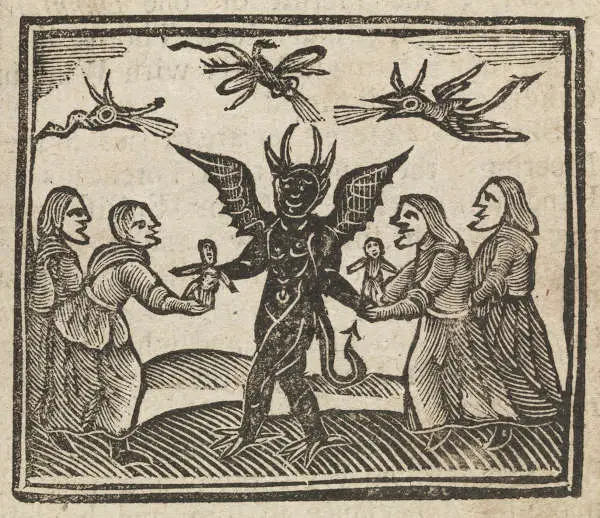
Classifying Magic: The Many Faces of the Occult
As we already mentioned, in the seventeenth century, magic was broadly classified into two distinct categories: natural and demonic. But it was also classified based on the level of knowledge, the sophistication of its practitioners, and the scope and ambition of their practices
Learned vs. Popular Magic: A Look at Common Practices
Magic in the seventeenth century was also classified based on the level of knowledge and sophistication of its practitioners, leading to a division between learned and popular magic.
Learned magic was practiced by educated individuals, such as scholars, alchemists, and philosophers, who had access to classical texts and complex theories. These magicians engaged in elaborate rituals, employed arcane symbols, and often sought to blend their magical practices with emerging scientific knowledge.
Learned magic was deeply intertwined with the intellectual currents of the time and was seen as a pursuit of knowledge and power.
In contrast, popular magic was the domain of the common people, rooted in folklore, superstitions, and traditional practices passed down through generations. This type of magic included everyday activities such as using charms, casting spells, or engaging in simple rituals to protect against evil, cure ailments, or bring good fortune.
Popular magic was more accessible, less formalized, and often practiced without the elaborate theoretical framework that characterized learned magic. Despite its simplicity, it played a significant role in the daily lives of ordinary people, who relied on these practices to navigate the uncertainties of life.
Related reading: The Evolution of Modern Western Magic: From Ancient Mysticism to Today’s Spiritual Path – Opens in new tab
Lesser vs. Greater Magicians: Who They Were and What They Did
Magicians in the seventeenth century were often classified based on the scope and ambition of their practices, leading to the distinction between lesser and greater magicians.
Lesser magicians typically engaged in more practical, everyday forms of magic, such as healing, divination, or the casting of protective spells. These individuals might be village healers, wise women, or cunning folk, who provided services to their communities based on their knowledge of herbs, charms, and local traditions. Their magic was functional and immediate, addressing the needs and concerns of ordinary people.
Greater magicians, on the other hand, were often seen as possessing extraordinary knowledge and power. They were usually educated men who pursued more ambitious goals, such as alchemical transmutation, summoning spirits, or seeking the philosopher’s stone. These magicians were not just practitioners of magic; they were also philosophers, scientists, and scholars who sought to unlock the deepest secrets of the universe.
Their work was often conducted in secrecy, away from the prying eyes of the public, and they were sometimes regarded with awe, fear, or suspicion by those who knew of their activities. The distinction between lesser and greater magicians highlighted the varying levels of influence and respect accorded to different types of magical practitioners in this era.
Influential Thinkers and Their Magical Theories

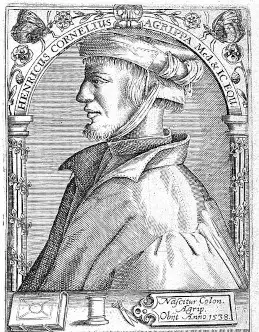
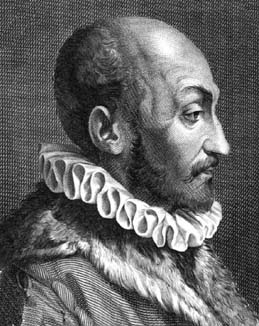
Pioneers of Natural Magic
Marsilio Ficino, Cornelius Agrippa, and Giambattista della Porta were among the most influential figures in the development of natural magic during the Renaissance and early seventeenth century.
Ficino, an Italian scholar and philosopher, played a crucial role in reviving Neoplatonism, blending it with mystical and astrological ideas. He believed that the human soul could connect with the divine through the manipulation of celestial influences, particularly through music and rituals that aligned with the movements of the stars. Ficino’s work laid the foundation for later magical practices that sought to harmonize the human spirit with the cosmos.
Cornelius Agrippa, a German polymath, expanded on these ideas in his seminal work, Three Books of Occult Philosophy. Agrippa systematically cataloged the principles of natural magic, including the use of talismans, the power of words, and the hidden properties of natural objects.
He emphasized the interconnectedness of all things in the universe and believed that by understanding these connections, a magician could influence both the natural and spiritual worlds. Agrippa’s writings became a cornerstone for those interested in the occult, blending mysticism with empirical observation.
Giambattista della Porta, an Italian scholar and scientist, further advanced the study of natural magic by integrating it with emerging scientific methods. His work, Magia Naturalis (Natural Magic), explored a wide range of topics from alchemy to optics, all through the lens of natural magic.
Della Porta believed that magic was a form of applied science, where understanding the hidden qualities of natural substances could lead to practical applications. His approach to magic as a systematic and empirical study helped bridge the gap between mystical traditions and the early scientific revolution.
Francis Bacon and the Integration of Magic into Philosophy
Francis Bacon, often regarded as the father of the scientific method, saw the potential in integrating aspects of magic into his philosophical approach to understanding nature. Although Bacon was critical of the more mystical and superstitious aspects of magic, he recognized that the study of nature’s hidden powers—the very essence of natural magic—could be valuable. Bacon advocated for a systematic approach to knowledge that included empirical investigation and experimentation, which he believed could uncover the “secrets” of nature.
In his work Novum Organum, Bacon proposed a method of inquiry that involved careful observation, hypothesis, and experimentation—principles that echoed the practices of natural magicians. He argued that true knowledge could only be gained by understanding the natural world’s underlying principles and forces, many of which had been explored by magicians.
Bacon’s emphasis on empirical methods and his cautious acceptance of natural magic helped lay the groundwork for the scientific revolution, transforming magical practices into a more structured and respected form of inquiry.
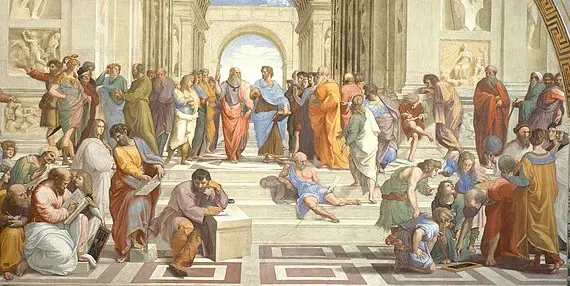
How Seventeenth-Century Thinkers Challenged Aristotelian Views
Seventeenth-century thinkers increasingly challenged the long-dominant Aristotelian worldview, which had been the foundation of Western science and philosophy for centuries.
Aristotelianism emphasized a hierarchical and teleological understanding of the universe, where everything had a predetermined place and purpose. This view left little room for the exploration of hidden forces or the manipulation of natural elements, which were central to magical practices.
Influential thinkers like René Descartes and Galileo Galilei began to question Aristotelian principles, advocating for a more mechanistic and mathematical approach to understanding the natural world.
Descartes, with his emphasis on doubt and reason, argued that the universe operated like a machine, governed by laws that could be discovered through rational inquiry. Galileo’s use of the telescope to observe celestial bodies directly contradicted the Aristotelian view of the heavens, showing that the universe was far more complex and dynamic than previously thought.
These challenges to Aristotelianism opened the door for new ways of thinking that were more aligned with the experimental and exploratory nature of magic. The rejection of rigid, predetermined structures allowed for a greater acceptance of the idea that the natural world was filled with hidden forces and powers, which could be uncovered through empirical investigation—ideas that were at the heart of both magic and the emerging scientific methods.
Related Reading: “Medieval Persecution of Magic – The Inquisition and the inquisitor’s profile“– Opens in new tab
The Role of Magic in Daily Life: From Healing to Fortune-Telling
In the seventeenth century, magic played an integral role in the daily lives of people across all social classes. It was a practical tool used to address common needs and concerns, from health and wellness to understanding the future.
Healing magic was particularly prevalent, with local healers, often known as wise women or cunning men, using herbs, charms, and spells to treat illnesses and injuries. These practitioners were trusted members of their communities, providing remedies that blended traditional knowledge with magical practices.
Fortune-telling was another significant aspect of daily life, offering guidance in uncertain times. Whether through reading palms, casting lots, or interpreting dreams, fortune-tellers provided insights into personal and communal challenges.
Their services were sought after for making decisions about marriage, travel, business, and other life events. Magic in these forms was seen not just as a way to influence outcomes but also as a means of understanding the world and finding comfort in its uncertainties.
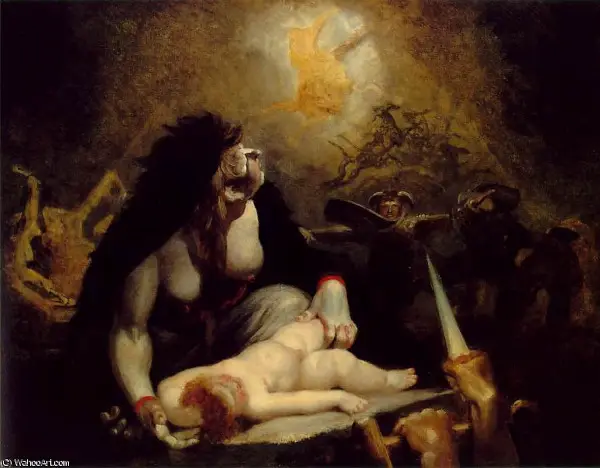
How Magic Was Perceived by the Masses
The perception of magic among the masses was complex and varied. On one hand, magic was deeply embedded in the cultural fabric of society, viewed as a natural and necessary part of life.
It was not seen as something inherently evil or dangerous; instead, it was a practical resource that offered solutions to everyday problems. Many people believed in the power of magic and saw it as a way to exert some control over their lives in an unpredictable world.
On the other hand, there was also fear and suspicion surrounding certain types of magic, particularly those that were associated with harmful intentions or supernatural forces. The line between beneficial and malevolent magic was often blurred, leading to a mix of reverence and wariness.
The Church’s condemnation of magic as heretical and its association with witchcraft also contributed to a more negative perception, especially in cases where magic was thought to be linked to demonic activity. Despite these concerns, the everyday use of magic persisted, indicating its deep-rooted importance in the lives of ordinary people.
Popular Magic: Tales, Superstitions, and Everyday Practices
Popular magic was rich in tales, superstitions, and practices that permeated everyday life. Folklore was filled with stories of magical beings, enchanted objects, and mystical events that both entertained and taught moral lessons. These tales often reinforced the belief in the supernatural, shaping how people understood the world around them.
Superstitions were widespread, governing many aspects of daily behavior. Common practices included avoiding certain actions believed to bring bad luck, and performing rituals to attract good fortune, like carrying a lucky charm.
These superstitions were not just trivial habits; they reflected a deep-seated belief in the power of unseen forces to influence life’s outcomes.
Everyday practices of popular magic ranged from simple home remedies and protective charms to more elaborate rituals for love, prosperity, and protection. These practices were passed down through generations, blending local customs with magical traditions, and remained an essential part of life despite the growing influence of science and religion.
Popular magic provided a sense of continuity and control, offering comfort and solutions in a world that was often unpredictable and challenging.
Related reading: Burning Words, Healing Bodies: How Medieval England Used Written Words to Heal – Opens in new tab
The Decline of Magic and Its Legacy
The Seventeenth Century: A Turning Point for Magic
The seventeenth century marked a significant turning point for the role of magic in society. As Europe entered the Age of Enlightenment, the intellectual landscape began to shift dramatically.
This period saw the rise of rationalism and the scientific revolution, which gradually eroded the credibility of magic as a legitimate field of knowledge. The early part of the century was still deeply entwined with magical thinking, but as scientific methods became more refined and widely accepted, the reliance on magic started to wane.
Intellectuals and philosophers increasingly distanced themselves from magical practices, viewing them as relics of a superstitious past rather than valid paths to understanding the natural world.
Why Magic Lost Its Place in Philosophy and Science
Magic’s decline in philosophy and science was driven by several key factors. First, the advancement of empirical science, particularly the work of figures like Galileo, Newton, and Descartes, introduced new methods of inquiry that emphasized observation, experimentation, and mathematical precision.
These methods provided clear, replicable results that contrasted sharply with the more ambiguous and subjective outcomes of magical practices. As these scientific approaches gained prominence, they offered explanations for natural phenomena that were previously attributed to magic, undermining the latter’s authority.
Secondly, the shift in philosophical thought played a crucial role. The rise of mechanistic philosophy, which viewed the universe as a vast, orderly machine governed by natural laws, left little room for the mystical forces central to magical theories.
Philosophers like René Descartes promoted a dualism that separated mind and matter, pushing the idea that the physical world operated independently of spiritual or magical influences. This philosophical shift, combined with the growing influence of the Church in condemning magic as heretical, further marginalized magic from serious intellectual discourse.
Related reading: Ancient Magic: From Divine Rituals to Dark Superstitions – Ancient Rome and Early Christianity – Opens in new tab
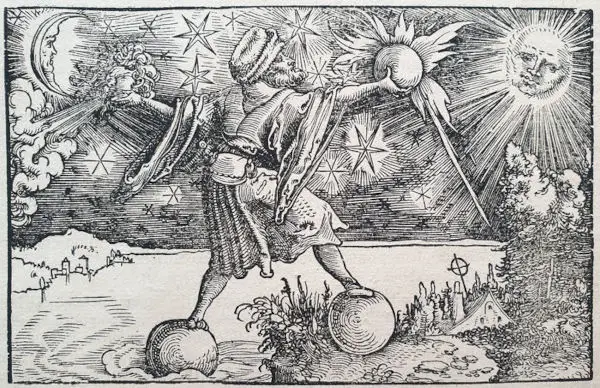
The Lasting Influence of Magic on Modern Thought
Despite its decline, the legacy of magic persisted in modern thought, influencing various aspects of culture, philosophy, and science. The principles of natural magic, with their focus on hidden forces and the interconnectedness of all things, subtly informed the development of fields such as chemistry and medicine.
Alchemy, once considered a magical practice, laid the groundwork for modern chemistry, with its emphasis on transforming substances and understanding their properties.
Moreover, the imaginative and symbolic aspects of magic continued to inspire literature, art, and psychology. The magical worldview, with its rich symbolism and focus on the inner life, found a new home in the emerging field of psychology, particularly in the work of Carl Jung, who explored the idea of archetypes and the collective unconscious—concepts that echo the magical traditions of old.
Magic also left a lasting mark on popular culture, where it remains a source of fascination and creativity. From fantasy literature to modern witchcraft movements, the ideas and practices of magic continue to captivate the imagination, offering alternative ways of understanding the world that coexist with scientific rationalism.
Thus, while magic may have lost its place in mainstream philosophy and science, its influence endures in the cultural and intellectual currents that shape our modern world.
Magic’s Journey: From Revered Knowledge to Forbidden Practice
Magic’s journey through history is a tale of transformation. In earlier centuries, magic was revered as a powerful source of knowledge that could unlock the mysteries of the universe. It was intertwined with religion, science, and philosophy, providing explanations for the unknown and offering solutions to life’s challenges.
However, as the seventeenth century progressed, magic’s status began to shift. The rise of empirical science and rational thought gradually pushed magic to the margins, recasting it from a respected discipline to a forbidden and often feared practice.
What was once considered a legitimate means of understanding the world was increasingly viewed as superstition or heresy, leading to its decline in the intellectual and cultural mainstream.

Understanding Magic’s Role in the Seventeenth Century Today
Today, the role of magic in the seventeenth century is understood not just as a series of superstitions or outdated beliefs, but as an integral part of the cultural and intellectual fabric of the time.
Magic represented a way of thinking that was deeply connected to the human experience—reflecting people’s desires to make sense of the world, control their environment, and find meaning in the unknown.
By studying magic and its influence, we gain insight into the mindset of early modern societies, their fears, hopes, and the transitional nature of their knowledge systems. Understanding magic’s role during this period also highlights the fluid boundaries between what we now classify as science, philosophy, and religion.
The Continuing Debate: Magic and Its Place in History
The place of magic in history remains a subject of ongoing debate among scholars. While some view it as a primitive precursor to modern science, others argue that it was a distinct and valuable form of knowledge in its own right, offering insights into the human condition that are still relevant today.
This debate reflects broader questions about how we define knowledge, truth, and progress. Magic’s legacy challenges us to reconsider the narratives of history that often emphasize linear development from ignorance to enlightenment.
Instead, it invites us to appreciate the complexities of intellectual history, where different ways of knowing coexist, compete, and sometimes merge in unexpected ways. The study of magic continues to provide a rich field for exploring these themes, ensuring its enduring place in historical inquiry.
Do you want to learn more about Magick? Check out our recommendations at “Magick Bookshelf” and many free resources at our “Free Magick Library“
Source: Rusu, DC. (2020). Magic in the Seventeenth Century. In: Jalobeanu, D., Wolfe, C. (eds) Encyclopedia of Early Modern Philosophy and the Sciences. Springer, Cham. https://doi.org/10.1007/978-3-319-20791-9_604-1
Stay in Touch
 Join our newsletter by using the forms on this website or click here!
Join our newsletter by using the forms on this website or click here! Follow us on Google News
Follow us on Google News Follow us on Facebook
Follow us on Facebook
Featured image from Depositphotos

